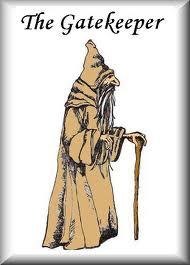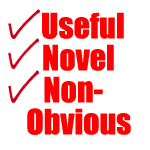Impossible to Patent: How to Spot a Time and Money Wasting Idea
As a registered patent attorney in Coral Springs (in South Florida), I’ve helped many inventors turn ideas into fortunes. Their years of investing – both time and money – finally pay off big time.
However, for each successful inventor that is making money from their ideas, there are dozens of examples of people who have worked hard and have nothing to show for it.
What separates the winners from those who toil in obscurity?
Bad ideas. More specifically, ideas and inventions that are ineligible for patent protection. I don’t want you to waste time and money on an idea you can’t profit from, so let’s take a closer look at the initial criteria required for a patent.
How to Pass the Patent Gatekeeper
Just because you fall in love with an idea doesn’t mean it will make you rich. There are certain requirements the patent examiner runs your patent application through to determine if you are eligible for a patent.
If you ignore these requirements, you will waste countless hours and money on an idea that can NOT get patented.
With that in mind, make sure your idea follows the patent application to the letter. And to do this you must follow what I call "The 3-Part Patent Process"
The 3 Part Patent Test
There are three very specific qualifications you must pass for the patent examiner to approve your patent application.
1. Your idea must be USEFUL to receive a patent. The first thing a patent examiner will look for in your patent is how useful it is. The general rule here is if your idea should help a specific group of people save time or money.
For example: a dishwasher that cuts washing time in half is useful. A dishwasher that uses twice as much water is not useful.
2. Your idea must be NOVEL to receive a patent. Next, patent examiners determine if your idea is unqiue or novel. This is why a patent attorney does a comparative analysis to find out the differences between his client’s invention and the inventions of other people.
For example: A dishwasher that uses ultraviolet light or sound waves is novel or unique. A dishwasher that washes with soap and water is not unique.
3. Your idea must be NON-OBVIOUS to receive a patent. Finally, patent examiners determine if your idea is non-obvious for the application it was designed for. This is where diagrams, illustrations and other paperwork the patent attorney creates comes in handy.
 For example: A dishwasher that cleans dishes using known systems is obvious. A dishwasher that claims to improve the air quality of the inside living areas of a building is not.
For example: A dishwasher that cleans dishes using known systems is obvious. A dishwasher that claims to improve the air quality of the inside living areas of a building is not.
There are many other jobs of the patent attorney – like reviewing similar patents and negotiating with the patent office examiner – but your invention will never get to that stage (and you will never be able to cash in on your idea) if you don’t follow the useful, novel, and non-obvious methodology.